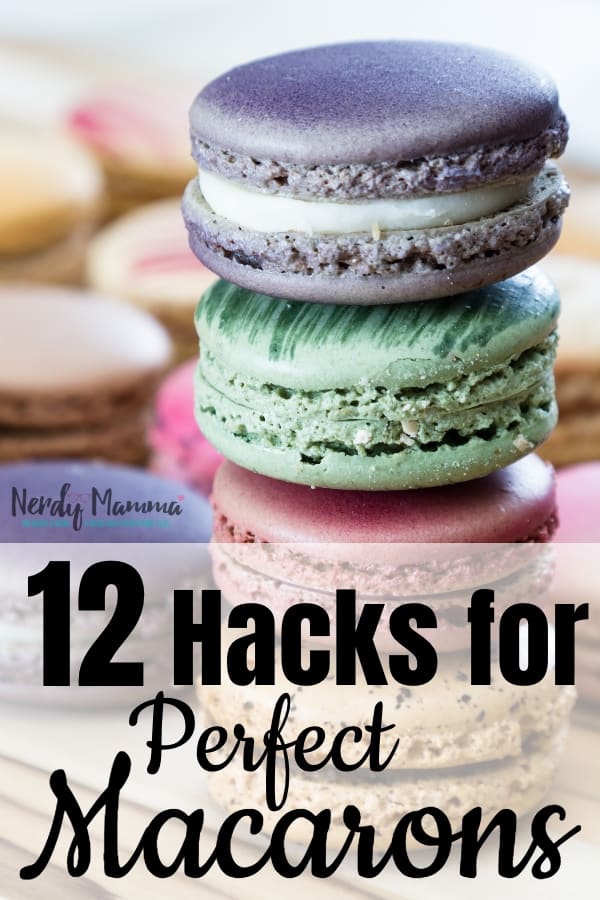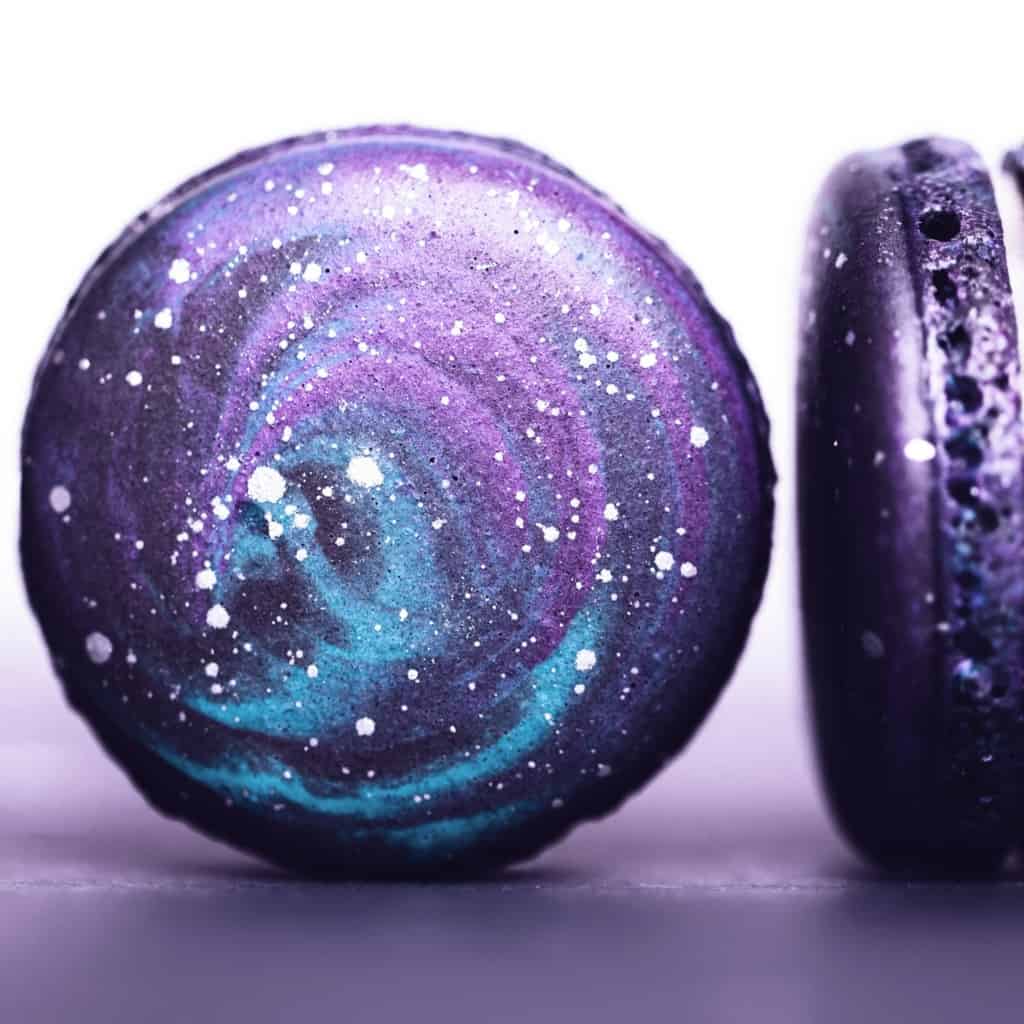I was hopeless at making macaron cookies, but now that I have these 12 Hacks for Perfect Macarons, I am a cookie-making-machine!
I have to admit something.
I was not always the best at making macarons.
Let me rephrase that, it was a sad disaster.
But then a friend let me in on a few tips and tricks.
And BAM! I’d made these amazing Chocolate Espresso Macarons and I’ve never looked back.
Now, I’m sharing these 12 Hacks for Perfect Macarons that I seriously feel like made all the difference.

Here are the 12 Hacks for Perfect Macarons
- Always WEIGH every ingredient. It is important to weigh instead of using cup increments for this particular cookie. You might scoff at this, but it’s for real a kind of picky recipe, so weighing is more precise and can really help. If you don’t have a scale, I got this really simple-to-use digital scale (paid link) with a flat face–you know because less edges equals less I have to clean up when I make a mess. LOL!
- SIFT all of the dry ingredients to be sure that you have a smooth batter–this is what will get you a smooth shell. Sifting the dry ingredients multiple times also helps. I recommend 2-3 times–seriously. While this is not absolutely necessary, it will give you a nice smooth shell with no random lumps or bumps. And what’s sifting an extra couple of times if you get a smooth, pretty cookie?! If you don’t have a sifter (which I lost mine in the last house move, so, I had to go shopping…) I found this pretty, one-handed sifter (paid link) that’s got a really nice trigger-like action instead of the side spinner thing…I like it.
- Use ROOM TEMPERATURE eggs. Some recipes say that you need to use “aged” egg whites that have been aged for days or even weeks… I do not do that–sound gross. I just set my eggs in a bowl of warm water about 10 minutes before I get started. You can also heat some water in a cup, empty it, then turn the cup upside down over your eggs, but I just toss mine in warm water…seems simpler to me.
- Make sure you have the correct consistency for your batter. You should be able to hold up your spatula and have a solid ribbon run off–no chunks or lumps, but a ribbon. You should be able to draw a figure 8 and it stay on the surface of the batter a few seconds. Check your batter often, and make sure to stop when you reach this point. Go no further.
- Use a large mug or cup to hold your piping bag while you fill it with the batter. This makes it so much easier and it is far less messy. And you’ll be able to get more batter made into cookies than if you make a mess with it.
- Use a SILICON MAT! This is pretty important. If you use anything else the macaron shells will stick and/or burn and you will not be able to remove them. If you do not have one, check out this silicon mat (paid link). And then, as a little extra help, I made this absolutely wonderful, yet simple template for measuring the size of each cookie. Using this, you’ll know how much to pipe onto your silicone mat (paid link)…you know, things…
- Make sure you hold the piping bag/tip completely vertical when piping. This will help get a nice circle and that will allow the feet to form properly. Feet are a big thing with the macaron cookie, so just do this and they’ll be perfect.
- BANG the tray a few times and pop the air bubbles before letting them set. This will help have a more solid inside, and no random holes throughout the cookie. You can just pick it up by the sides and then drop it a little–but do it multiple times.
- Get an OVEN THERMOMETER. This is pretty important, so don’t forget. You need to make sure that you are baking the shells at the correct temperature and ovens can vary. Even if you try to calibrate your oven before you do it, it can be off just because of the weather outside. So, check out my oven thermometer (paid link) (I’m in love with it–it’s fantastic) and don’t forget to use it.
- Make sure the macaron shells are completely done before removing them from the oven. Touch the top of the shell and if it wiggles around on the “feet” it is not finished. Put them back in for 1 minutes increments until they do not move. But don’t leave them in too long either. Just after they stop wiggling–no longer.
- Let the cookie shells cool completely before trying to remove them. Not only do burned fingers suck, but the cookies are still a little soft and you can mush them and make them lose their shapes…so wait. Be patient.
- Finally, let the cookies mature in the fridge for at least 24 hours. I know it is hard, but they are so much better once they have “matured”. It’s like a perfect cookie is just waiting…but you have to let it chill…
If you enjoyed these 12 Hacks for Perfect Macarons and you’re ready to give making these perfect little cookies a try, be sure to pin these tips. That way you can be reminded of them when it’s time to make a new batch!

And if you’re really digging macarons but don’t know what recipe to start with, lemme just give you a rundown of some of the BEST macarons I’ve made to date!





































